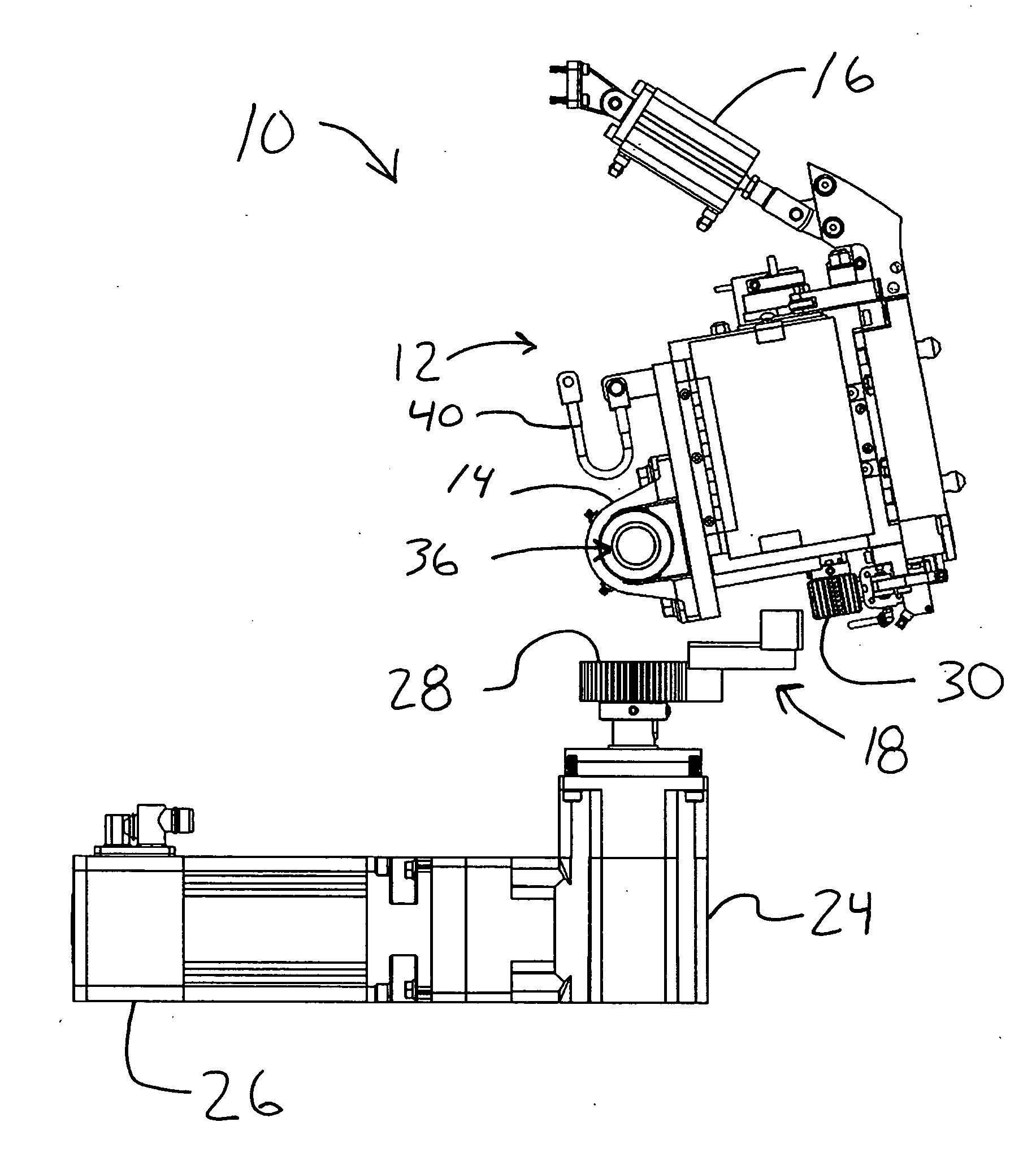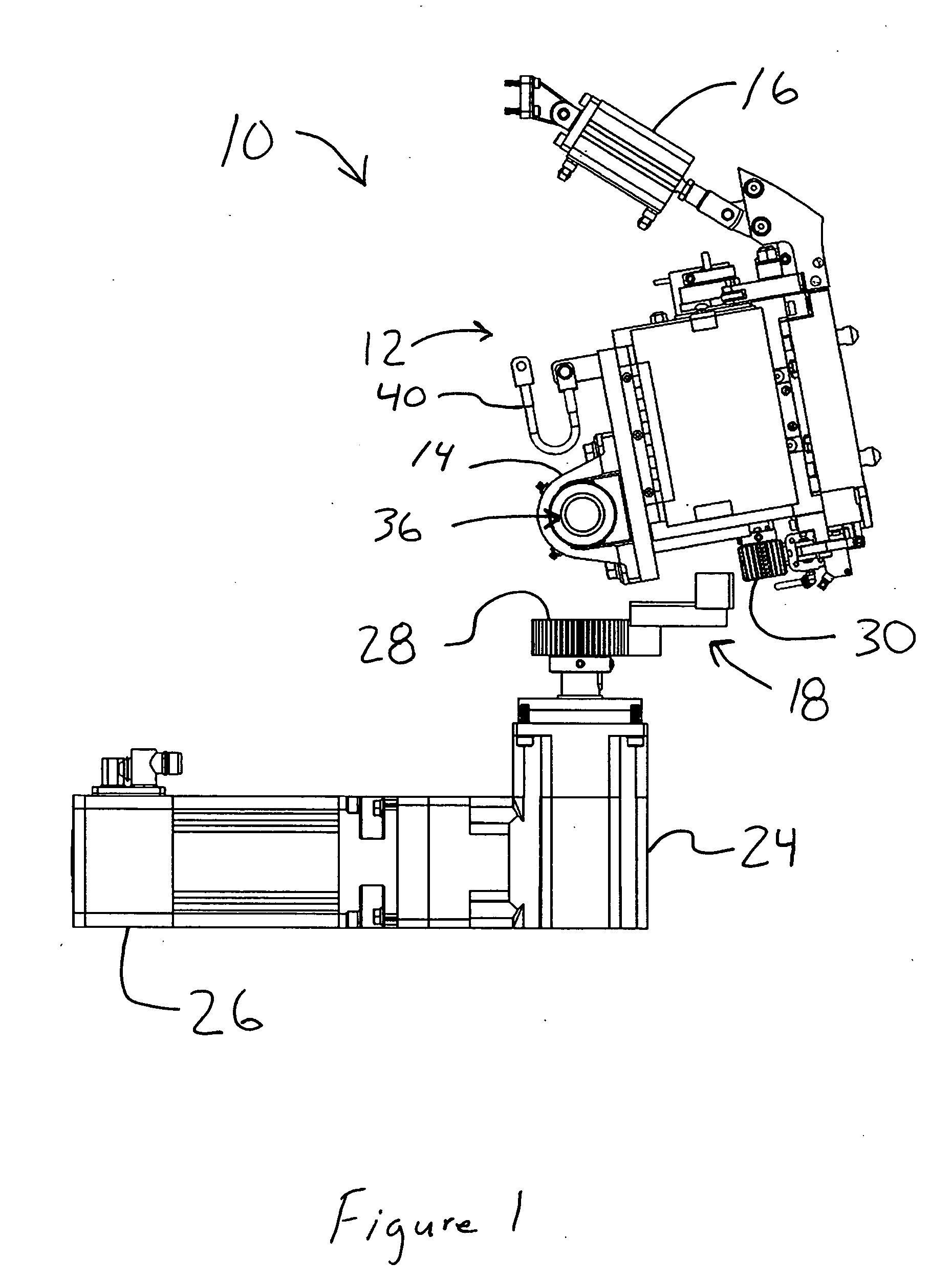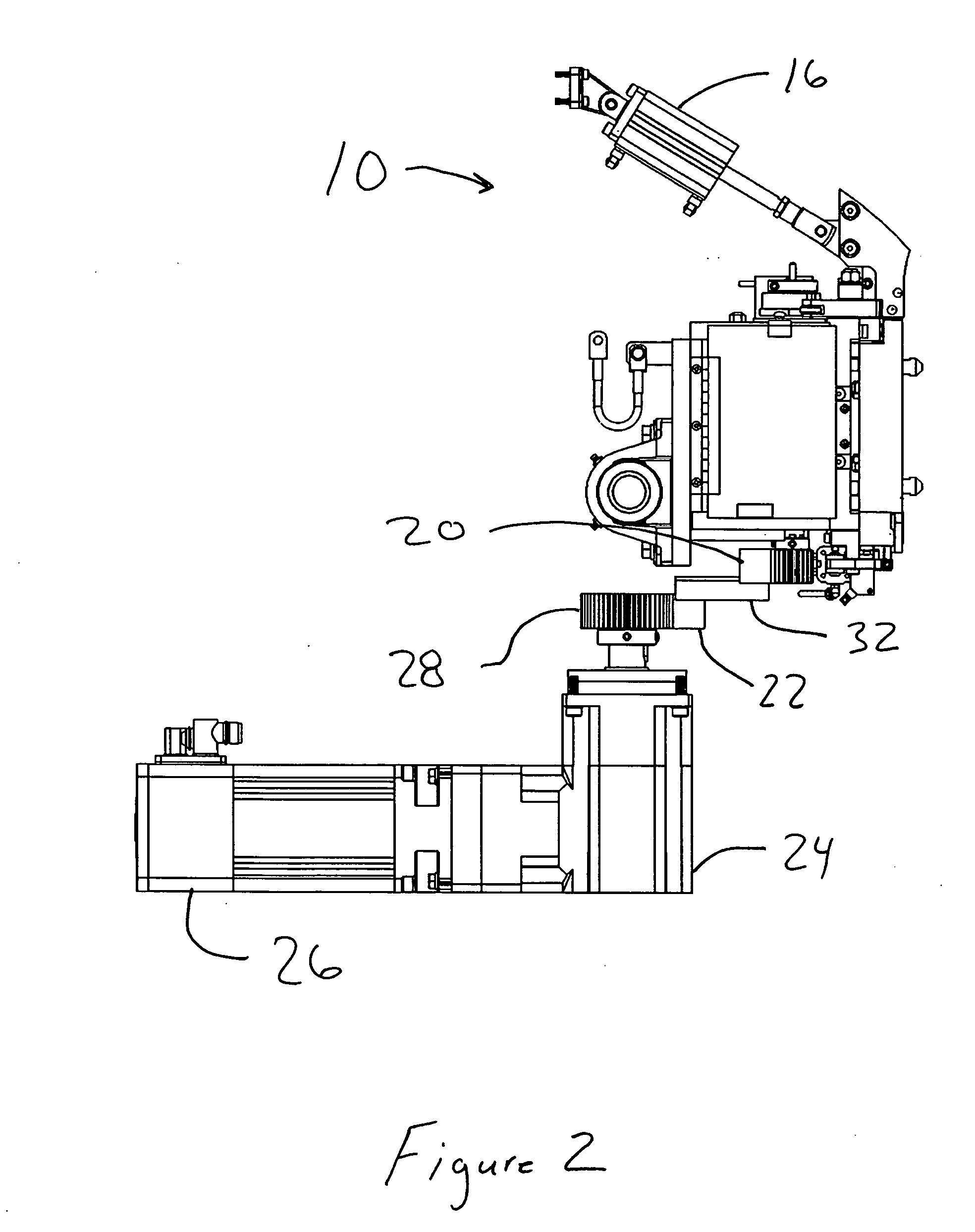Method and apparatus for driving multiple knotters
- Summary
- Abstract
- Description
- Claims
- Application Information
AI Technical Summary
Benefits of technology
Problems solved by technology
Method used
Image
Examples
Embodiment Construction
[0032] Referring to the accompanying drawings in which like reference numbers indicate like elements. FIGS. 1 and 2 illustrate a multiple knotter drive 10. The multiple knotter drive 10 includes a knotter 12, a bearing 14, and a tilt-out shaft 36. The knotter 12 is a device that, when engaged, twists together two ends of a wire loop wrapped around a bale. The bearing 14 is connected to the knotter 12 and mounted on the tilt-out shaft 36. As such, the knotter 12 is pivotable about the tilt-out shaft 36. A strap 40 is used to limit the degree to which the knotter 12 can pivot. One strap end is attached to the knotter 12 and the other strap end is attached to the carriage. In the event that maintenance is required on either a knotter or the rack, the strap can hold the knotter in a position convenient for maintenance without allowing it to swing freely.
[0033] A knotter drive gear 30 is mounted on the knotter 12. In the depicted embodiment, the knotter gear 30 is a 21 tooth gear with a...
PUM
 Login to View More
Login to View More Abstract
Description
Claims
Application Information
 Login to View More
Login to View More - R&D
- Intellectual Property
- Life Sciences
- Materials
- Tech Scout
- Unparalleled Data Quality
- Higher Quality Content
- 60% Fewer Hallucinations
Browse by: Latest US Patents, China's latest patents, Technical Efficacy Thesaurus, Application Domain, Technology Topic, Popular Technical Reports.
© 2025 PatSnap. All rights reserved.Legal|Privacy policy|Modern Slavery Act Transparency Statement|Sitemap|About US| Contact US: help@patsnap.com



